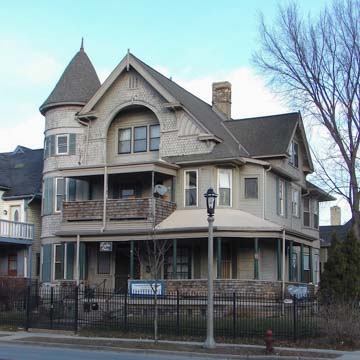With its cone-roofed corner tower and wrap-around veranda, the grand Queen Anne Kretschmar House beautifully exemplifies the late phase of this Victorian style. Skillful proportioning tempers the building’s imposing volume. The facade is dominated by a single gable, the shingling is a fish-scale pattern, and plain Tuscan porch columns supplant the usual spindlework. Houses like Kretschmar’s helped establish Layton Boulevard as the near South Side’s most prestigious residential thoroughfare, but the street never became the exclusive domain of the wealthy. Middle- and working-class citizens moved into cottages, bungalows, duplexes, and foursquare houses along the same street. Louis Kretschmar was a successful meatpacker, among the first of many South Side German American merchants and professionals to leave older, more congested neighborhoods to the east and settle along Layton Boulevard.
You are here
Louis Kretschmar House
If SAH Archipedia has been useful to you, please consider supporting it.
SAH Archipedia tells the story of the United States through its buildings, landscapes, and cities. This freely available resource empowers the public with authoritative knowledge that deepens their understanding and appreciation of the built environment. But the Society of Architectural Historians, which created SAH Archipedia with University of Virginia Press, needs your support to maintain the high-caliber research, writing, photography, cartography, editing, design, and programming that make SAH Archipedia a trusted online resource available to all who value the history of place, heritage tourism, and learning.


